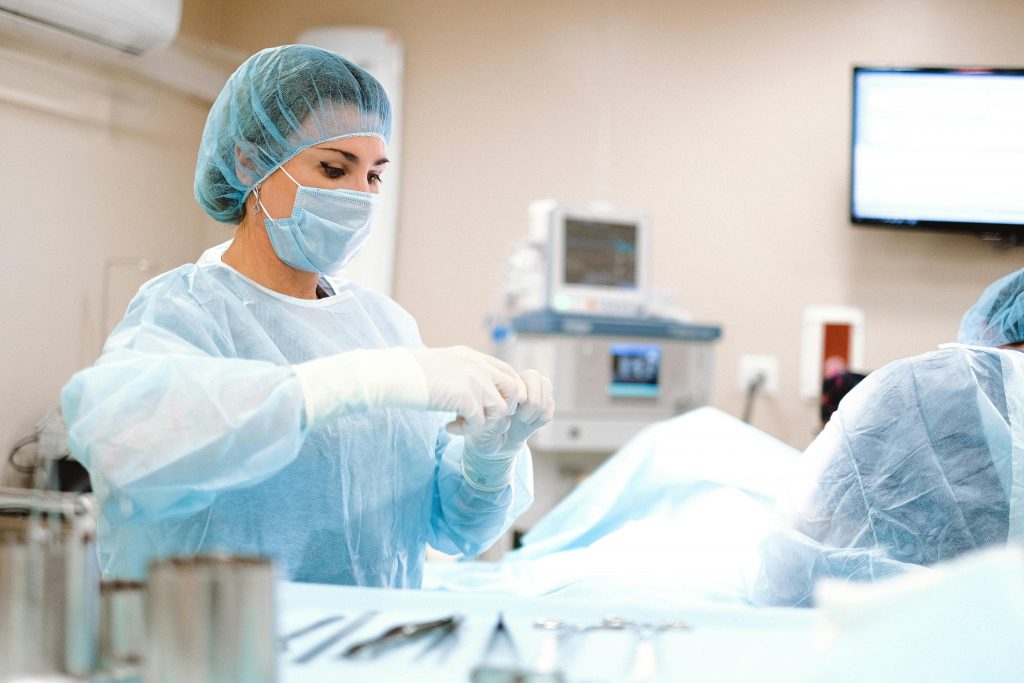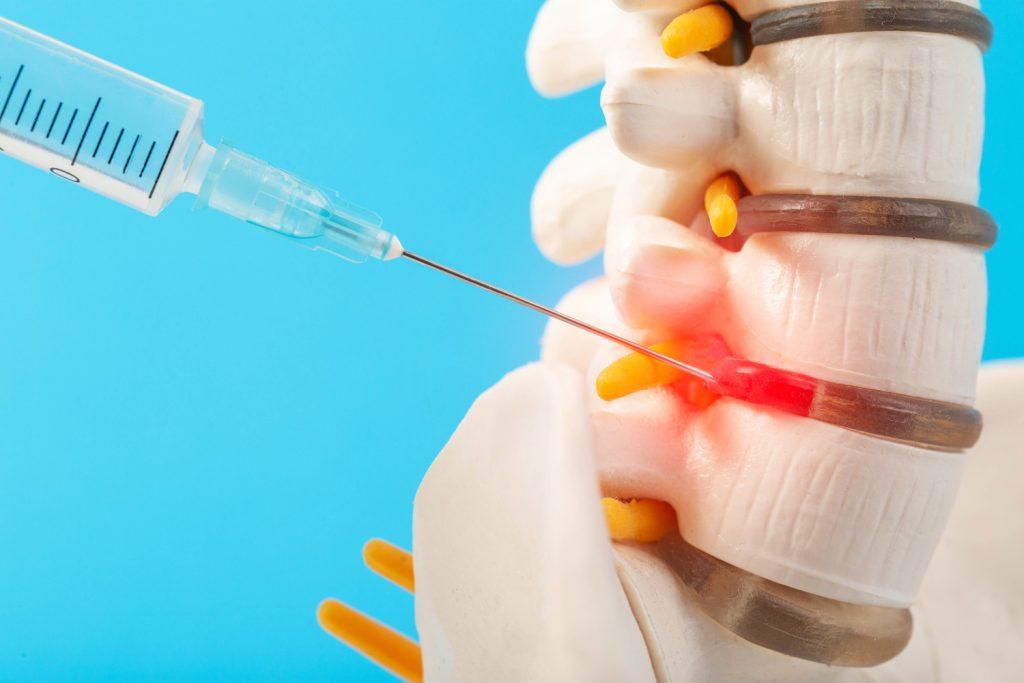Cervical Fusion Recovery: What to Expect After Surgery

Wondering how to navigate recovery after cervical fusion surgery? You’ll be tasked with pain management, adhering to limitations on your activities, and participating in physical therapy. This guide outlines the anticipated stages of recuperation, equipping you with knowledge for a seamless and effective convalescence.
Understanding Cervical Fusion Surgery
Anterior cervical discectomy with fusion (ACDF) surgery, alternatively known as anterior cervical fusion surgery, is a procedure performed to alleviate issues in the cervical spine. The process entails removing a compromised disc that is responsible for nerve compression and spinal cord pain. By creating an incision at the front of the neck, surgeons gain direct access to rectify the problem area. After excising the damaged disc, they introduce a bone graft into this space between vertebrae. This encourages fusion and confers stability on the spine.
Often deployed as a treatment for various conditions including herniated discs, cervical stenosis, and degenerative disc disease which induce severe discomfort and neurological symptoms—this surgical intervention has shown efficacy in mitigating these distressing signs. Anterior cervical discectomy and fusion enable decompression of affected nerve roots alongside spinal cord alleviation—for most patients undergoing such surgeries, an enhanced ability to enjoy life without being beset by persistent pain ensues.
The Procedure
A cervical spinal fusion, typically a procedure lasting between one to three hours, is conducted with the patient under general anesthesia. This spine surgery encompasses several key actions.
- An incision is made in the front of the neck by the surgeon to reach the cervical spine.
- The surgeon then meticulously removes any damaged disc material that has been causing pressure on nerves and impairing the spinal cord.
- Following this removal, a bone graft sourced from either the patient’s hip bone, an external donor, or synthetic materials such as BMP (bone morphogenetic protein) is inserted between two vertebrae to encourage vertebral fusion.
To provide stability while healing occurs after surgery, metal plates and screws may be utilized to hold the bones together firmly. The goal of this operation includes maintaining proper alignment within your neck’s structure, thus aiding in quicker recuperation periods post-op. Recognized for its high safety profile when carried out by skilled surgeons, patients undergoing ACDF can look forward to a significant reduction in pre-operative pain levels coupled with considerable improvements in overall bodily function immediately following successful intervention.
Conditions Treated
Spinal fusion surgery, often advised for a range of conditions such as cervical stenosis, herniated discs, and the wear-and-tear effects of degenerative disc disease, can alleviate severe symptoms. When disc material bulges out due to a tear in cases of a herniated disc, it may press on nearby nerves causing intense or mild neck pain along with numbness that extends down to the arms and even into hands and fingers.
In instances where there is a contraction of the spinal canal known as cervical stenosis, this compression within the confines of the spinal cord could result in profound discomfort and neurological complications. With degenerative disc disease leading to dehydration and shrinking of intervertebral discs—the buffers between vertebrae—pain may ensue alongside issues from nerve impingement. Through ACDF (Anterior Cervical Dissection and Fusion) surgery, these painful disorders are typically managed by easing distressful symptoms associated with them.
Immediate Post-Surgery Expectations

Patients who undergo ACDF surgery are Transferred to a recovery area post-procedure where they receive close monitoring of their vital signs, including any severe chest pain, as well as observation for overall stability. To manage the pain effectively, medication is provided and patients are motivated to begin sitting up and walking relatively soon after the surgery to enhance mobility and improve blood circulation. Although experiencing discomfort and fatigue is typical following such a procedure, these sensations often diminish over several weeks or months.
During the initial stage of recovery from an ACDF procedure, it’s normal for patients to experience some discomfort while also having reduced levels of activity. Nevertheless, rigorously following their surgeon’s guidance on care post-surgery alongside proper management strategies can lead not only to significant pain relief but also elevate one’s quality of life significantly—even among those previously suffering from intense symptoms. Ensuring successful healing transitioning from hospital back home requires vigilant symptom tracking by patients coupled with active participation throughout their recovery timeline.
Hospital Stay and Monitoring
The majority of patients undergoing ACDF surgery can anticipate this.
- being released from the hospital usually within a day, although certain cases may necessitate an extended stay if the procedure is particularly complex
- during early recovery, it’s crucial to monitor vital signs and confirm that the patient has woken up adequately and achieved stability before leaving the hospital
- this phase is essential for identifying any immediate postoperative complications and confirming that the patient is prepared to resume their recuperation at home.
Typically, ACDF surgery qualifies as an outpatient procedure which enables many individuals to return home on the same day. Depending on whether more intricate issues must be addressed during surgery, some might require a prolonged period in the hospital ranging from one to three days. Surgery Consultants of Florida prioritize expedited recovery times so that patients can get back home quickly while prioritizing safety.
Pain Management
Managing pain effectively is crucial for a seamless recovery after ACDF surgery. In the initial stages, opioid pain medications are usually prescribed to manage discomfort and are commonly tapered down during the first-fortnight post-operation. Peak levels of pain typically occur from day 1 to 3 following the surgery and tend to diminish progressively over a subsequent period ranging from two to six weeks.
To help relieve pain and facilitate healing, patients are advised to engage in an amalgamation of rest, therapeutic exercises, and proper use of pain medication. During follow-up appointments, healthcare providers may fine-tune their approach to managing discomfort based on how well a patient is recovering. Successful management of pain contributes significantly not only to keeping patients at ease but also plays an important role in enhancing their overall journey back to health through the recovery phase.
Early Recovery Phase

During the initial stage of recovery, patients are encouraged to limit physical exertion and avoid activities that involve heavy lifting. It is imperative for proper healing that they follow their surgeon’s precise directives closely. The utilization of a neck brace plays an instrumental role in this phase by providing stability to the cervical spine, thereby minimizing unnecessary movement.
It is equally important to address prevalent symptoms like pain and challenges with swallowing as part of managing one’s health post-surgery. Ensuring adequate hydration, making necessary dietary changes, and maintaining open communication with healthcare providers regarding ongoing symptoms are key components in navigating the path to recovery successfully.
Activity Restrictions
Throughout the initial phase of recuperation, patients must steer clear of picking up anything over 5 pounds and eschew actions that necessitate bending or twisting at the neck or waist. Engaging in rigorous workouts and high-impact sports should be put on hold from a minimum of 8 weeks to potentially as long as 12 months.
Tasks around the house that call for any bending, lifting, or twisting ought to be bypassed so as not to exert undue pressure on the area affected by surgery. By week three following their operation, individuals can typically embark upon light duties and may lift objects weighing no more than 10 pounds. Adhering strictly to specific instructions provided by their healthcare professionals is vital.
Use of Neck Brace
Following surgery, it is typically suggested that patients wear a neck brace for the initial 4 to 6 weeks to:
- Restrict too much motion
- Promote proper healing
- Alleviate discomfort
- Secure and stabilize the cervical spine against potential complications.
Surgeons instruct their patients on how frequently they should use the neck collar, often permitting its removal only during certain activities such as eating or bathing. Ensuring that the surgical site remains protected through diligent compliance with wearing the neck brace is crucial for a successful recovery period after an operation involving the neck or spine.
Managing Common Symptoms
After undergoing ACDF surgery, patients often experience a range of symptoms such as:
- A sore throat
- Hoarseness
- Discomfort or pain
- Challenges with swallowing
Typically, these symptoms begin to subside within the first four weeks post-surgery. If they continue beyond this period, patients need to inform their healthcare provider.
To manage and mitigate these postoperative effects, prescribed medication use is advised along with dietary modifications and maintaining adequate fluid intake. Early in the physical therapy process, interventions like applying ice packs, using electrical stimulation techniques, and receiving massage therapy may contribute to reducing pain and discomfort. Undergoing comprehensive physical therapy is crucial for attaining prolonged relief from symptoms and facilitating successful recovery from surgery.
Physical Therapy and Rehabilitation

Physical therapy is an essential component in the rehabilitation following ACDF surgery, aiding in avoiding injury while accelerating healing and assisting patients to restore strength and motion. Physical therapy often commences roughly two weeks after the surgery, with initial efforts centered on managing pain and reducing inflammation.
Employing a combined regimen that incorporates physical, occupational, and speech therapies, Surgery Consultants of Florida provides holistic support for patients during their recuperation. This extensive assistance is pivotal for ensuring a streamlined recovery period and achieving the best possible results.
Starting Physical Therapy
Patients begin physical therapy approximately two weeks after undergoing ACDF surgery. It might be delayed until four weeks after the procedure depending on each patient’s unique rate of recovery and the personalized recommendations from their healthcare professional.
The start of physical therapy plays a pivotal role in:
- Alleviating pain
- Diminishing swelling
- Enhancing healing processes
- Assisting with recuperation
Patients must adhere to their physical therapist’s instructions to guarantee that exercises are conducted accurately and without risk.
Exercises for Strengthening
Exercises aimed at fortifying the stabilizing muscles in the back and neck play a vital role post-ACDF surgery. Physical therapists often prescribe specific workouts like shoulder shrugs and prone horizontal abduction to facilitate strength restoration and augment flexibility.
Engaging in neck extension and flexion activities contributes substantially to bolstering neck muscles while expanding the range of motion after surgery. To advance mobility and curtail stiffness, patients may carry out diagonal neck stretches that target both their upper back and neck regions.
Long-term Rehabilitation Goals
The long-term objectives of rehabilitation prioritize the maintenance of correct posture and prevent surgical interventions through the conservation of neck mobility. Individuals undergoing treatment are instructed on maintaining appropriate body alignment during everyday tasks including sitting, standing, and computer work.
To avert future episodes of neck pain and bolster spinal well-being, patients need to persist with proper lifting methods, maintain good posture, and perform apt exercises. Physical therapy imparts to these individuals healthier practices that apply both to regular activities and those requiring greater physical exertion.
Long-Term Recovery and Lifestyle Adjustments

The rehabilitation period following ACDF surgery includes:
- Implementing lifestyle modifications to enhance recuperation and avert subsequent complications
- Adjusting one’s workspace and living environment ergonomically to minimize neck stress
- Engaging in consistent physical therapy sessions that facilitate recovery and bolster movement flexibility
Patients must recognize their physical boundaries and adhere strictly to these guidelines for an effective healing journey.
To aid the long-term recuperation process, keeping body weight within healthy parameters coupled with initiating a routine walking regimen is advisable. These measures serve to diminish spinal pressure, contributing to a more efficient and thorough recovery experience.
Full Recovery Timeline
The period needed for a full recovery following ACDF surgery typically spans several months, with the timeframe influenced by personal health conditions and commitment to post-surgery instructions. Typically, patients may anticipate a recovery timeline of 8 to 12 weeks. Total recuperation might extend as long as six months.
Within three months post-surgery, the fusion is expected to be robust with spinal strength improving progressively over a year. It’s essential that individuals remain patient and diligently adhere to their prescribed recovery protocols to ensure complete rehabilitation and resumption of regular activities.
Lifestyle Changes
Adjusting the ergonomics of both home and work environments can lessen neck tension and promote a more efficient recovery process. It’s important to establish workstations that encourage proper posture, as well as ensuring routine tasks do not exert excessive pressure on the cervical spine.
Post-surgery, patients must sustain a healthy body weight to diminish stress on the spinal structures. Commencing a walking regimen in the initial week following surgery is recommended. Starting with short distances such as one or two city blocks and gradually extending these walks is beneficial for recovery.
Follow-up Appointments
Monitoring the advancement of spinal fusion through consistent follow-up appointments is crucial for confirming that the healing process is on track. These visits provide an opportunity for healthcare professionals to identify and manage any complications that might occur during the recovery phase.
It’s also essential during these follow-up visits to modify rehabilitation strategies according to patient progress. Doing so guarantees a personalized recovery plan, catering precisely to individual requirements and fostering the best possible healing outcome.
How Surgery Consultants of Florida Can Help
At Surgery Consultants of Florida, patients are afforded complete assistance throughout the process of ACDF surgery and their subsequent recuperation period. With a history that spans three decades in addressing injuries sustained from accidents, they boast an adept medical staff including neurosurgeons certified by respective boards and physicians experienced in interventional pain management, all well-versed in various procedures aimed at alleviating back discomfort.
They implement strategies that entail:
- Detailed evaluations lead to tailor-made treatment regimens designed specifically for the individual requirements of each patient
- Customized attention dedicated to bolstering the efficiency of rehabilitation programs
- Improvement of patients’ total recovery journey
Through this customized approach to care, not only is the effectiveness of rehabilitation efforts significantly enhanced, but also it elevates the entire experience associated with post-surgery recuperation for patients.
Personalized Care Plans
At Surgery Consultants of Florida, treatment plans are crafted to meet the specific needs and medical conditions of each patient. These strategies encompass aspects of physical, emotional, and psychological health to facilitate a holistic healing journey.
By emphasizing individualized care, Surgery Consultants of Florida guarantees that patients are provided with the most beneficial and nurturing treatments available. This tailored method aids patients in experiencing a more streamlined and thorough recovery process.
Expertise and Experience
At Surgery Consultants of Florida, the medical team is composed of expert surgeons who are specially trained in handling injuries related to accidents. Their extensive expertise ensures that patients benefit from superior care, which results in better recovery outcomes and increased success rates for surgeries performed.
The multidisciplinary team at Surgery Consultants of Florida is known for its comprehensive approach to patient care coupled with effective communication strategies. Such teamwork fosters a coherent recovery process for individuals receiving ACDF surgery.
Comprehensive Support
Continuous interaction and teamwork among medical professionals facilitate uninterrupted care for patients. At Surgery Consultants of Florida, they maintain regular communication with patients by providing an attorney and physician portal that gives instant access to their electronic health records.
Creating a supportive atmosphere that centers on the needs of the patient is essential in nurturing recovery, enthusiasm, and overall health. For those recovering from cervical fusion surgery, thorough support is crucial—it provides individuals with vital tools and advice needed to ensure the best possible healing experience and promotes their well-being.
Frequently Asked Questions
How long does it take to fully recover from ACDF surgery?
Recovering from ACDF surgery typically takes 8 to 12 weeks, with complete healing potentially taking up to 6 months.
When can I start physical therapy after ACDF surgery?
Beginning physical therapy approximately two weeks following ACDF surgery is common, yet for some patients, it may be initiated up to four weeks after the procedure. Adhering to your physician’s recommendations is crucial.
What are common symptoms after ACDF surgery, and how can they be managed?
Following an ACDF surgery, it is usual to experience symptoms such as a sore throat, hoarseness, pain, and trouble swallowing. These can be alleviated through the use of medications prescribed by your physician along with alterations in diet and treatments including the application of ice packs, electrical stimulation therapy, and therapeutic massage.
Adhering strictly to the guidelines provided by your healthcare provider will ensure optimal outcomes in managing these post-surgical effects.
Why is wearing a neck brace important after ACDF surgery?
It is essential to use a neck brace post-ACDF surgery as it serves to stabilize the cervical spine, alleviate pain, and safeguard against potential complications by restricting too much motion while the neck begins to heal. This step is vital for ensuring an appropriate and successful recovery from the spine operation.
What kind of support does Surgery Consultants of Florida provide during the recovery process?
Surgery Consultants of Florida offers tailored care strategies, and regular progress reports via a dedicated portal for attorneys and physicians, and employs an integrated team approach to promote the best possible healing and wellness throughout the surgery recovery process.
Warning: urlencode() expects parameter 1 to be string, array given in /www/wwwroot/surgeryconsultantsofflorida.com/wp-includes/formatting.php on line 5693

